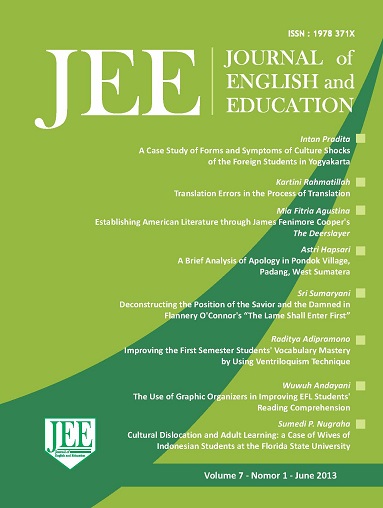Main Article Content
Abstract
Women have very unique characteristics. They are far different from men. Therefore, women needs are also different from men needs including the need to read. Men tend to read adventure works. The adventure works fulfill man's need to taste the adventure as the hero-individual or group in adventures works is able to overcome obstacles and dangers to accomplish some important and moral mission. In another hand, women prefer to read romance ones. It is because romance formula provides what women desired. Moreover romance works are the feminine equivalent of the adventure stories. Furthermore, chick-lits, the women best friend, is one of the romance works. As it is used romance formula, chick-lits has ability to provide women's desire. It transforms the need, and interprets it through the narrative of chick-lits. That is why, because to find out how the interpretation of the works is an fascinating challenge, this paper tries to see the connection between chick-lits romance formula and how it affects the readers, the women.
Key words: chick-lits, women, romance formula, and the needs
Article Details
Copyright (c) 2016 JEE, Journal of English and Education

This work is licensed under a Creative Commons Attribution-ShareAlike 4.0 International License.
Authors who publish with this journal agree to the following terms:
- Authors retain copyright and grant the journal right of first publication with the work simultaneously licensed under a Creative Commons Attribution-ShareAlike 4.0 International License that allows others to share the work with an acknowledgment of the work's authorship and initial publication in this journal.
- Authors are able to enter into separate, additional contractual arrangements for the non-exclusive distribution of the journal's published version of the work (e.g., post it to an institutional repository or publish it in a book), with an acknowledgment of its initial publication in this journal.
- Authors are permitted and encouraged to post their work online (e.g., in institutional repositories or on their website) prior to and during the submission process, as it can lead to productive exchanges, as well as earlier and greater citation of published work (See The Effect of Open Access).

